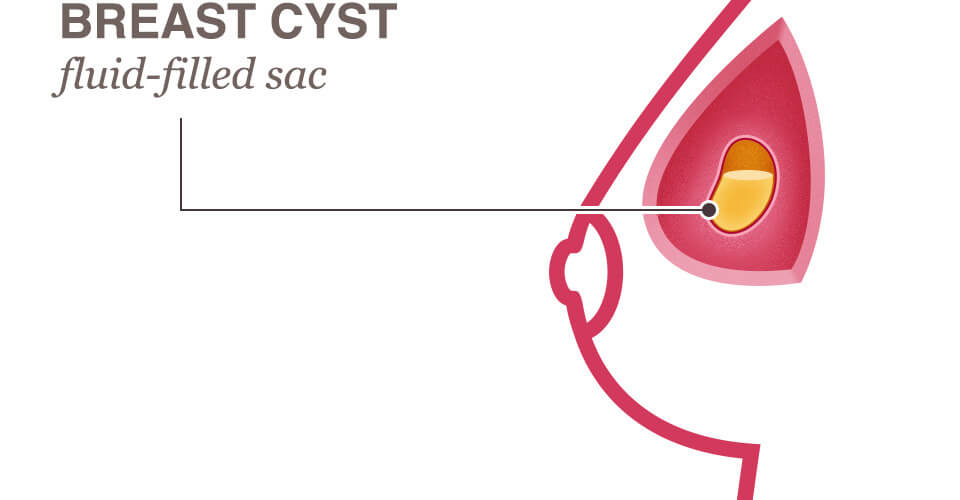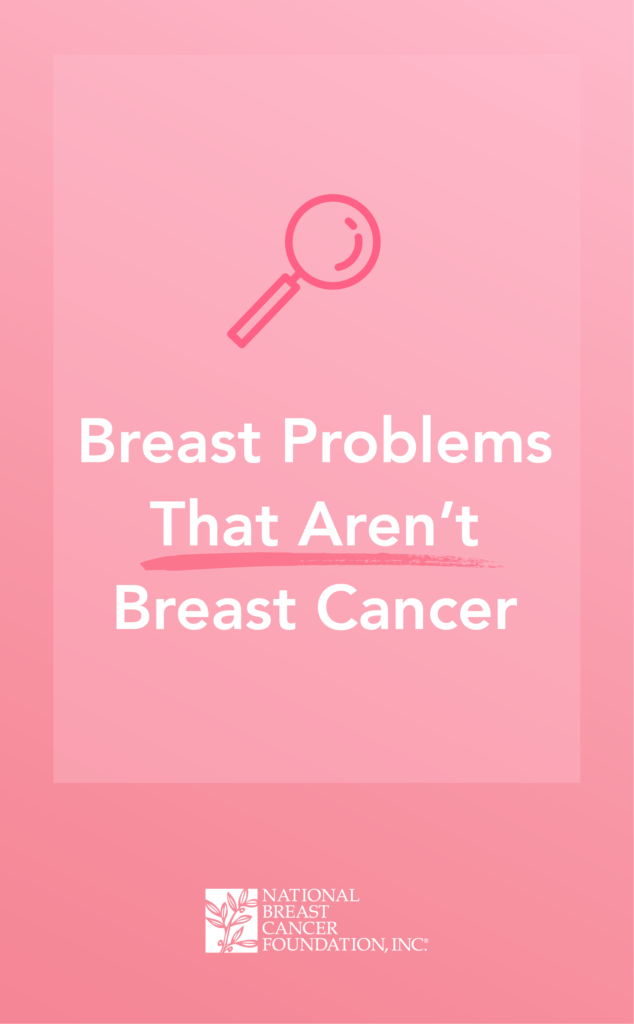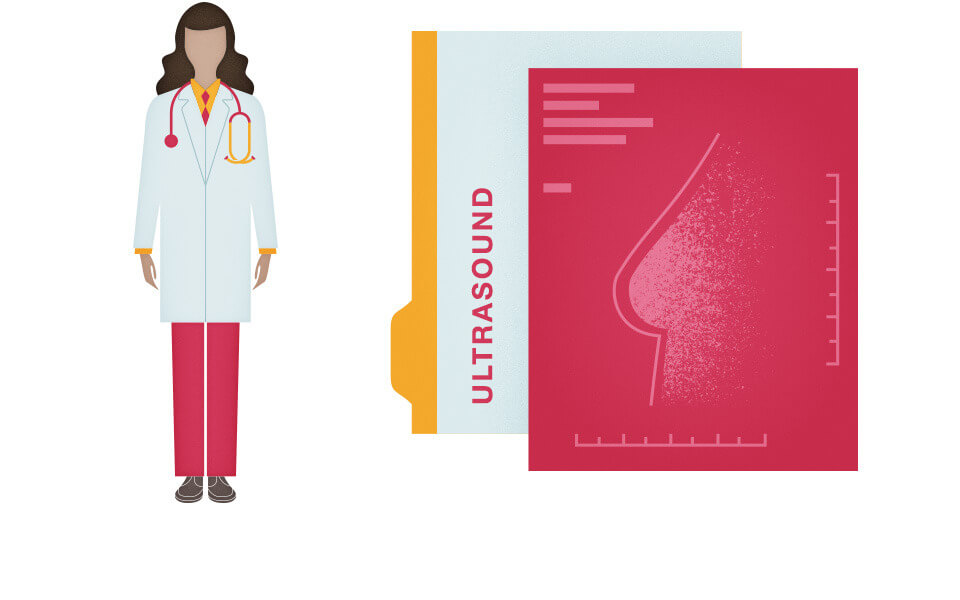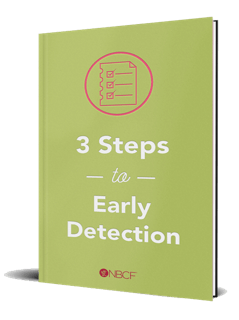Breast Cyst
What Is A Breast Cyst?
A cyst in the breast may feel like a lump, but upon examination the lump is a small, generally harmless sac filled with fluid rather than a cancerous or benign lump of cells. You may have one cyst or many cysts that appear together.
Cysts are more common in premenopausal women and can cause localized pain. Usually they feel like a grape and are relatively soft in texture.

Understanding Breast Cysts
If you’re not aware of your breast health, important changes in your breasts can be easy to miss. Download our free eBook, Breast Problems That Aren’t Breast Cancer, to learn about the most common non-cancerous breast problems, like cysts, you should know about.
Tell us where we can send your free copy:

How Would I Know The Lump Is A Cyst And Not A Tumor?

A healthcare professional can determine whether a lump is a cyst or tumor. A simple ultrasound scan placed against the skin will allow the healthcare professional to see whether the lump appears solid or hollow and filled with fluid. If the lump is fluid-filled, it may require no treatment at all. You may notice that the cyst comes and goes depending on the hormone cycle of menstruation.
A solid mass doesn’t always mean it is cancer. The shape of the mass will help tell the radiologist what it likely is. A mass that is hard to the touch and has jagged edges could be cancer. Ultrasound imaging and additional imaging using X-Ray, called spot imaging, can help the radiologist differentiate shapes of masses.
What If The Cyst Bothers Me And I Want It Taken Out?
If a cyst is very bothersome, your healthcare provider may drain it first. A small needle is used to inject anesthesia into the breast to numb it, making it easier to then have the cyst drained. By using ultrasound to guide a needle into the cyst, the fluid can be removed and you may not have any more bothersome problems from it again. However, sometimes drained cysts will fill up again and when this happens, you may elect to have it removed surgically or you may leave it alone and see if it eventually goes away on its own.
Do cysts lead to cancer?
Nearly all “simple cysts” are just that – simple. They are almost never associated with a higher risk of cancer. The only possible exception in which a cyst might indicate a slightly elevated risk for cancer is when other risk factors for cancer, such as a strong family history, are already present, or when further examination of imaging studies reveals some debris inside or along the edge or margin of it.
What If My Breasts Are Always Lumpy? (Fibrocystic Breasts)
Fibrocystic breast tissue is a very common condition and means that you have denser breast tissue and may notice lumps and bumps that are common to the feel of your breasts. It is important for women with fibrocystic breast tissue to be diligent about performing breast self-exams so they are familiar with what is normal for their breasts and so they can report any changes.
Most premenopausal women have fibrocystic breast tissue. While performing your regular breast self-exam, make note of any lumps or bumps you identify and consult with your doctor. Consider your fibrocystic lumps to be your “normal” findings and determine through self-exam if something new is felt.
If I have fibrocystic breasts, should I ask my doctor about other types of screening?
Sometimes mammograms of women with fibrocystic breast tissue may be more difficult to read and interpret. Many healthcare professionals recommend choosing a breast center that offers digital mammography. Digital mammograms allow the radiologist to change to contrast of light and dark and to enlarge areas of the breast tissue on the screen to more closely examine areas of concern.
Materials on this page provided by: Johns Hopkins Medicine
Detecting breast cancer earlier
Breast cancer can’t usually be prevented, but you can take three important steps to help detect it earlier. The free resource, 3 Steps to Early Detection, can increase your chance of finding breast cancer before it spreads.
Tell us where we can send you your copy.




